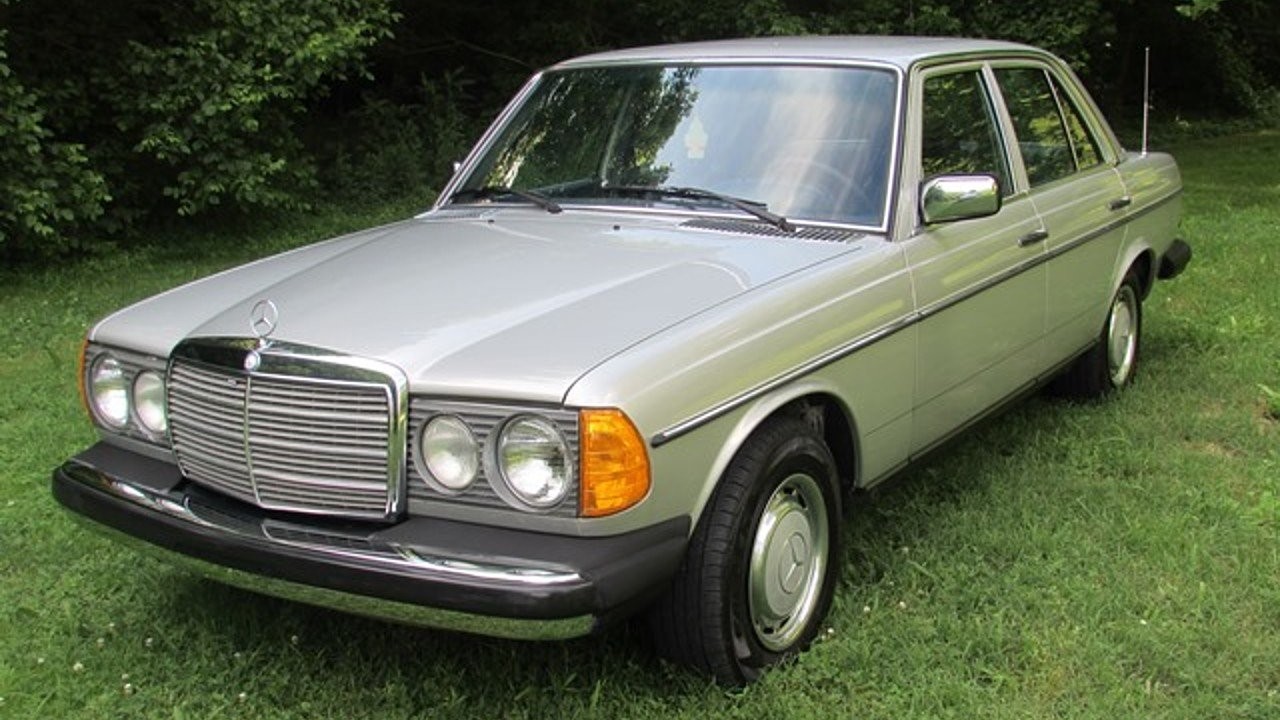The allure of classic Mercedes-Benz vehicles is undeniable, and for enthusiasts seeking a blend of robust engineering and understated luxury, the W123 series holds a special place. Among this iconic lineup, the 1980 Mercedes Benz 300D diesel stands out as a testament to enduring quality and efficient performance. My journey with one of these remarkable machines began unexpectedly, leading to a rewarding experience of restoration and rediscovery.
Driving past a modest used car lot one afternoon, a splash of color caught my eye – a 1980 Mercedes Benz 300D bathed in what I later learned was Orient Red. However, its initial appearance was far from vibrant. Years under the Florida sun had faded the paint to a chalky, almost white hue. It was this weathered patina that paradoxically piqued my interest, hinting at a story waiting to be unveiled.
Stepping inside, the interior told a different story. The tan MBTex upholstery, Mercedes-Benz’s renowned vinyl, had remarkably withstood the test of time, showing minimal wear or sun damage. While the carpet was rough and stained, this seemed a minor imperfection easily addressed. A quick trip to a local retailer revealed readily available, affordable car carpeting in a near-perfect tan match. With new carpeting laid throughout the cabin and extending into the trunk for added protection, the interior was revitalized, offering a glimpse of its original splendor.
Under the hood, the 1980 300D housed a naturally aspirated, five-cylinder diesel engine. This OM617 engine, essentially a 2.4-liter four-cylinder from the 240D with an additional cylinder, produced around 77 horsepower. While not a powerhouse, this engine delivered a respectable 25% power increase over the 240D, proving that every bit of power counts, especially in a car of this era. It’s worth noting that the turbocharged versions of the 300D and 300SD, introduced in 1979, significantly boosted output to a more robust 110 horsepower, marking a notable performance upgrade.
Despite its modest power figures, the 1980 300D was undeniably a luxurious vehicle for its time. A look into its original specifications reveals a surprising array of standard features that were considered premium in 1980. Power windows, a power antenna, genuine wood trim, effective fog lamps, vacuum-operated central locking, a rear defroster, a four-speed automatic transmission (uncommon for the era), an AM/FM stereo, and automatic climate control were all included. Optional extras were limited but desirable, such as an electric sunroof, AM/FM/cassette player, leather upholstery, metallic paint, and cruise control. When new, the 1980 Mercedes 300D carried an MSRP of approximately $21,000, which translates to over $62,000 in today’s dollars, underscoring its status as a significant investment and a true luxury car.
The W123 generation Mercedes-Benz is renowned for its exceptional build quality, a reputation that endures to this day. Available in diesel variants (240D, 300D non-turbo and turbo) and gasoline models (including the 230 and 280E), the W123 chassis offered sedan, coupe, and station wagon body styles, though engine availability varied across these configurations. Globally, even more engine choices were offered, catering to diverse markets. The coupe version, particularly a black 1985 300CD turbodiesel with the now-standard Bundt alloy wheels, remains a timelessly stylish design.
The used car lot where I discovered this Orient Red 300D was run by a retired car dealer from Florida, seeking to alleviate boredom in his retirement. His inventory was eclectic, sourced from his Florida contacts and typically numbered around eight vehicles. The 300D, with its remarkably low 80,000 miles (in the year 2000), had suffered from sun exposure, resulting in the paint’s weathered condition. Despite this, the car ran well, although a slightly rough idle and hesitation from a standstill indicated room for improvement.
An agreement was struck: I purchased the 300D for $1,800, and my previous car, a 450SEL, was placed on consignment. To address the paint, I turned to Klasse wax, a product I had previously used with great success. Its abrasive-free formula proved miraculous, effectively cleaning and removing surface imperfections. Three to four applications of Klasse red bottle cleaner/wax revitalized the Orient Red paint, bringing it back to a shine reminiscent of its original glory.
For the engine’s minor ailments, Power Service diesel treatment came to the rescue. Having used this product in a 1979 240D with excellent results, I applied a double dose of the silver bottle treatment over a couple of tankfuls of fuel, combined with a few spirited highway drives. This regimen effectively smoothed out the idle and eliminated the hesitation, restoring the engine’s smooth operation. Similar products like Sea Foam are also effective for such purposes, offering versatile solutions for both gasoline and diesel engines.
With the paint rejuvenated, the interior refreshed, and the engine running smoothly, the 1980 300D became a cherished, low-mileage classic acquired for a modest sum. It remained in my possession until a move necessitated its sale, making way for yet another intriguing automotive acquisition. The experience underscored the enduring appeal of the W123 Mercedes-Benz diesels – cars built to last, offering a unique blend of economy, reliability, and classic Mercedes-Benz luxury.
